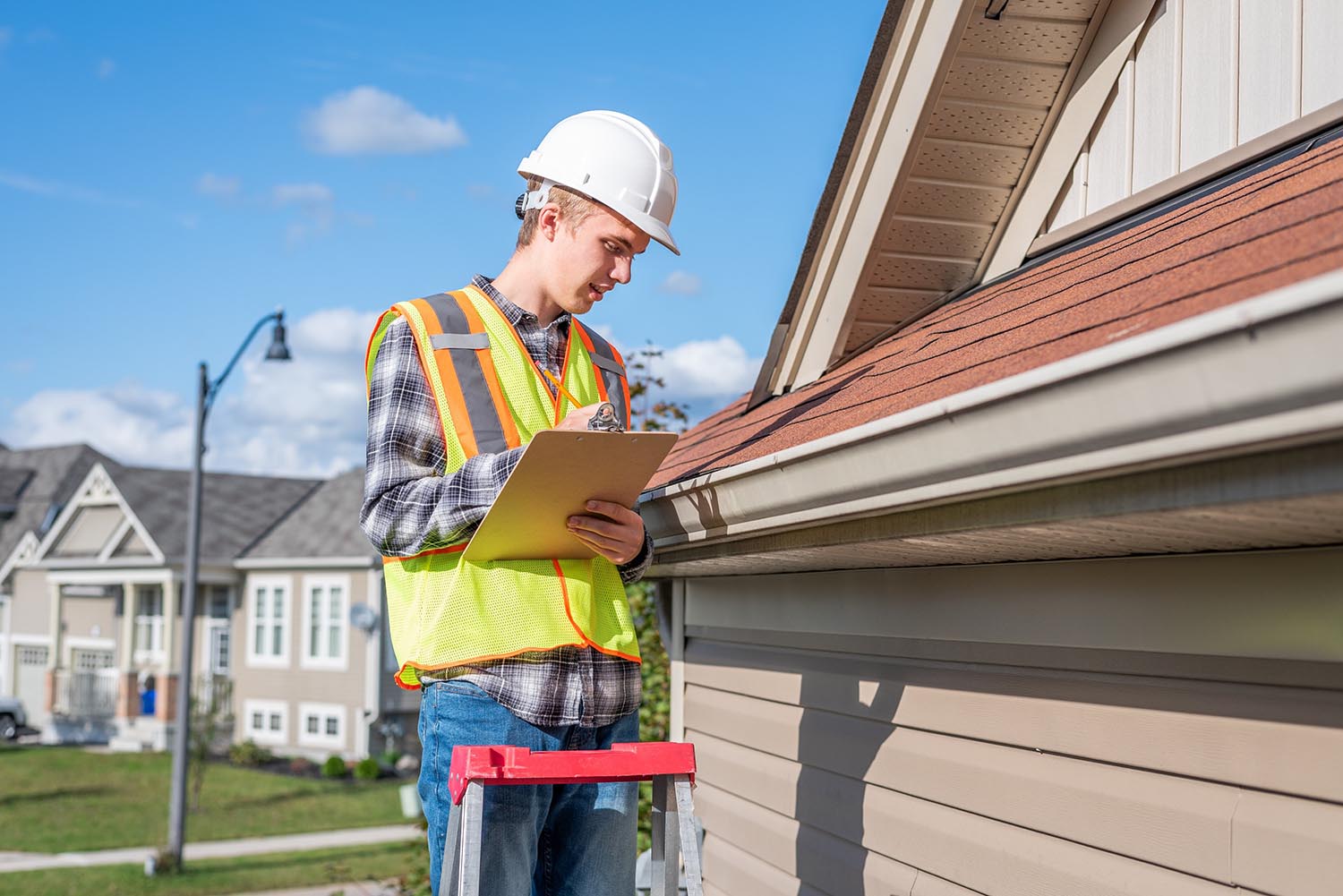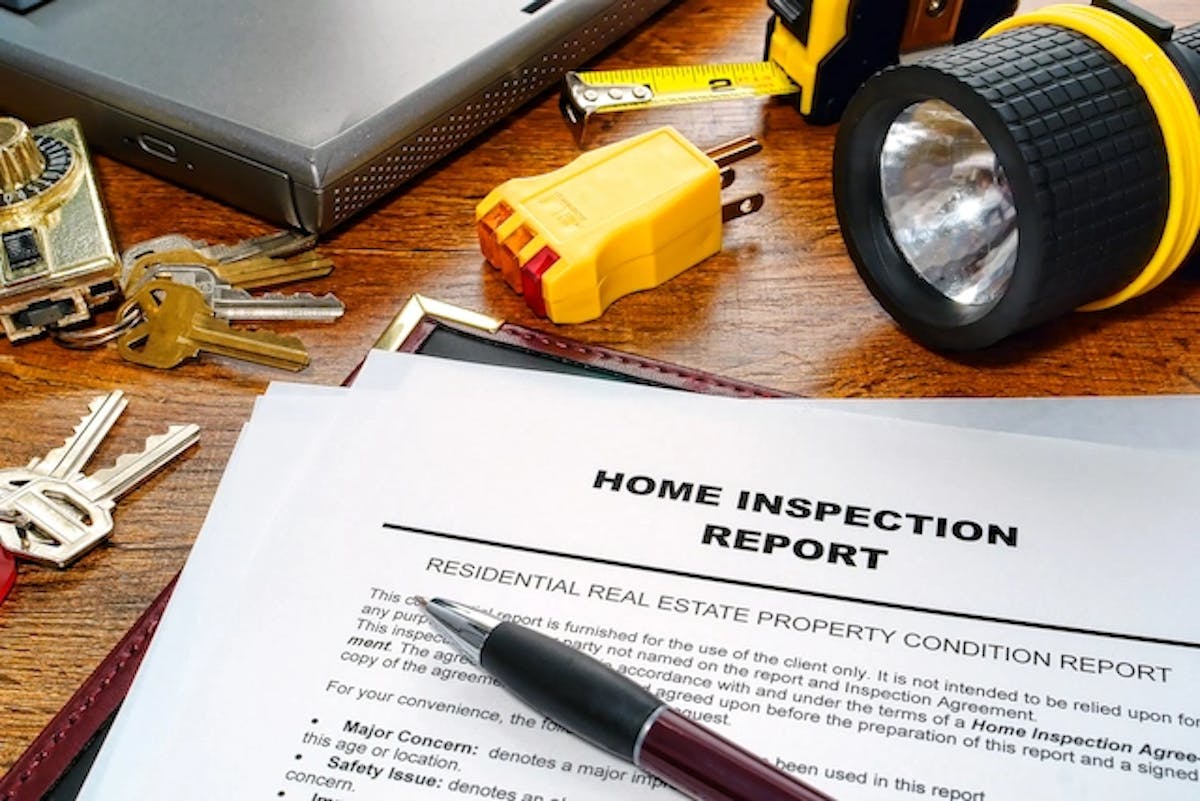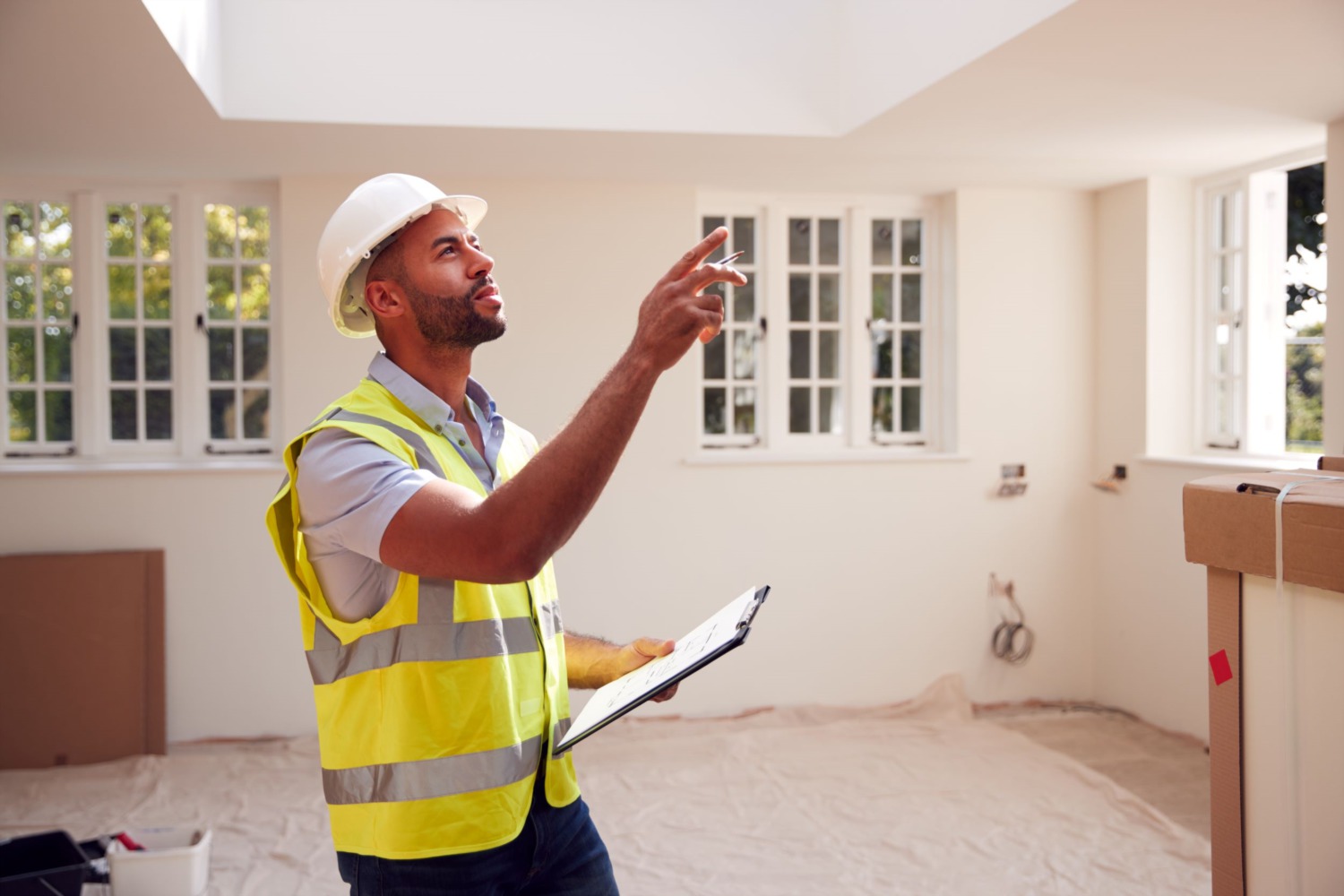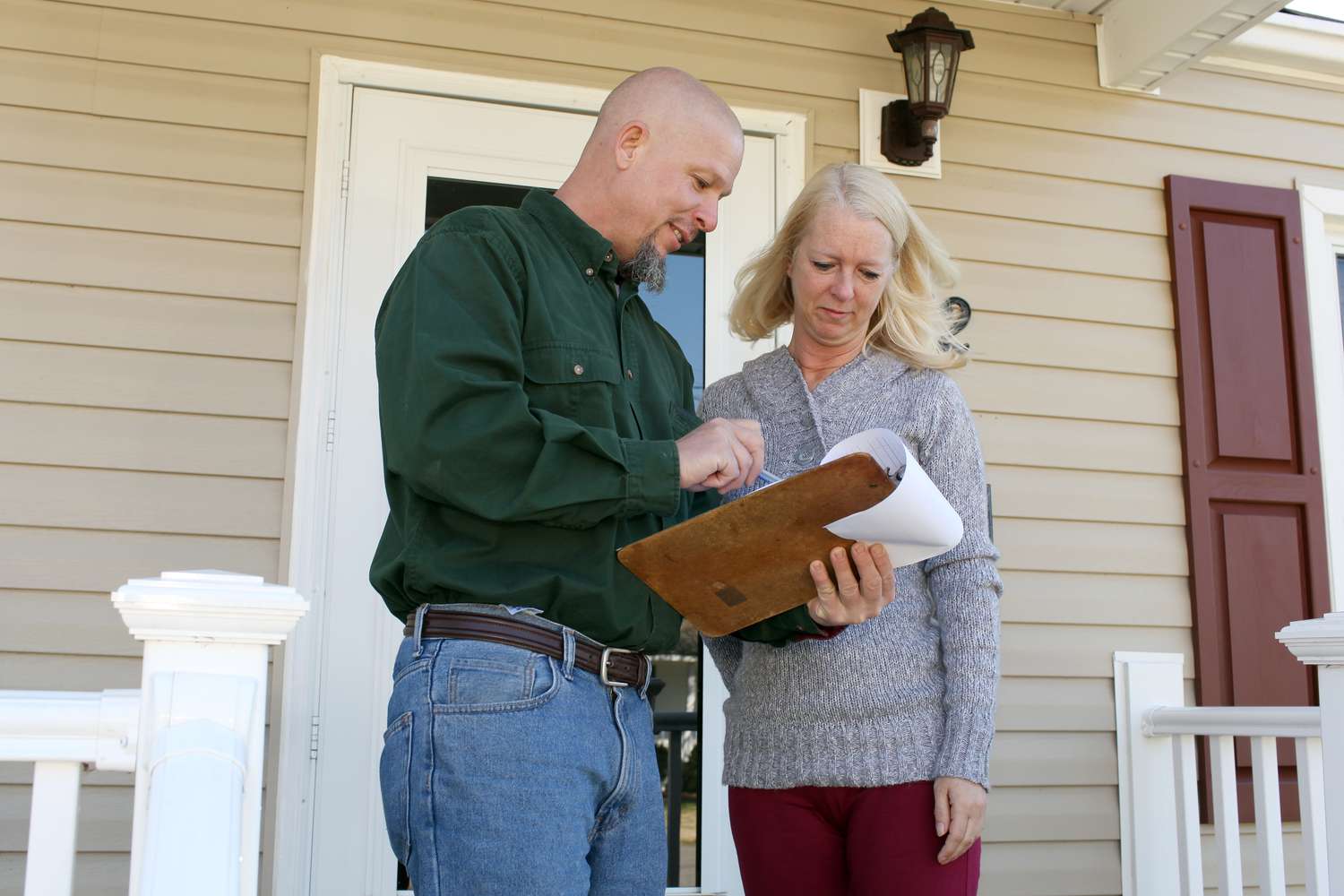Home>Home Maintenance>Who Pays For The Home Inspection: Buyer Or Seller?


Home Maintenance
Who Pays For The Home Inspection: Buyer Or Seller?
Modified: March 6, 2024
Discover who is responsible for covering the cost of home inspections - buyers or sellers. Learn more about home maintenance and financial implications.
(Many of the links in this article redirect to a specific reviewed product. Your purchase of these products through affiliate links helps to generate commission for Storables.com, at no extra cost. Learn more)
Introduction
When it comes to the home-buying process, one crucial step is the home inspection. A home inspection is a thorough examination of the property to assess its condition and identify any potential issues. It helps buyers make informed decisions and avoid any surprises after the purchase.
However, an essential question often arises: Who pays for the home inspection? Is it the responsibility of the buyer or the seller? The answer may vary depending on various factors, such as market conditions, purchase agreement terms, and local customs and norms.
In this article, we will explore the factors to consider when determining who pays for the home inspection. We will also discuss the advantages, potential drawbacks, and strategies for negotiating the home inspection cost. So, let’s dive in to find out whether it’s the buyer or the seller who typically foots the bill for the home inspection.
Key Takeaways:
- Who pays for the home inspection? It depends on factors like market conditions and purchase agreement terms. Negotiation and compromise between buyers and sellers are key to reaching a mutually beneficial agreement.
- Home inspection costs vary, but understanding who pays for it is crucial. Sellers paying for the inspection can attract buyers, while buyers have more control when they cover the cost. Negotiation and flexibility are essential for a successful agreement.
Factors to Consider
When determining who pays for the home inspection, several factors come into play. Let’s take a closer look at some of the key factors:
Market conditions:
The current state of the real estate market can influence who takes on the cost of the home inspection. In a seller’s market, where demand is high and inventory is low, sellers may be less inclined to cover the inspection expense since they have the upper hand in negotiations. On the other hand, in a buyer’s market, where there is an abundance of properties and limited buyer interest, sellers may be more willing to shoulder this cost to attract potential buyers.
Purchase agreement terms:
The terms outlined in the purchase agreement can also dictate who pays for the home inspection. The purchase agreement is a legally binding agreement that details the terms and conditions of the home sale. It typically includes information about the distribution of costs, including the responsibility for the home inspection. It’s crucial for both buyers and sellers to carefully review the purchase agreement to determine who is responsible for this expense.
Local customs and norms:
The local customs and norms of the real estate market can have a significant impact on who pays for the home inspection. In some areas, it may be customary for the seller to cover the cost of the inspection as part of their obligations to ensure the property’s condition. In other regions, it may be common for the buyer to handle this expense. Understanding the local customs and norms can help both parties navigate the home-buying process more effectively.
Overall, while market conditions, purchase agreement terms, and local customs and norms play a role in determining who pays for the home inspection, it is ultimately a negotiable aspect of the transaction. Both parties need to discuss and agree upon the specifics before finalizing the purchase. Let’s explore the potential scenarios of who might be responsible for the home inspection costs: the seller or the buyer.
Home Inspection Costs
Before delving into who pays for the home inspection, it’s important to understand the associated costs. Home inspection fees can vary depending on several factors, including the size and location of the property, as well as the complexity of the inspection itself. Here are a few key points to consider:
Average cost of a home inspection:
On average, home inspections in the United States range from $300 to $500. However, it’s essential to keep in mind that prices can vary based on factors such as the size, age, and condition of the property, as well as the inspector’s experience and qualifications. Larger homes or those with unique features may cost more to inspect.
Additional charges:
In addition to the base fee, there may be additional charges for specific inspections or services. For example, if the home has a pool, foundation issues, or a septic system, the inspector may need to perform specialized inspections, which could incur extra costs. It’s crucial to inquire about any additional charges upfront and have a clear understanding of what is included in the inspection.
Keep in mind that while the cost of the home inspection is an important consideration, it is a small investment compared to the potential savings and peace of mind it can offer. Uncovering hidden issues before purchasing a home can save buyers from significant financial burdens down the road.
Now that we have covered the costs associated with a home inspection, let’s explore whether the seller or the buyer typically pays for this service.
Seller Pays for Home Inspection
In some cases, the seller may choose to pay for the home inspection. Let’s explore the advantages, reasons, and potential drawbacks of this arrangement:
Advantages and reasons:
1. Attracting buyers: By covering the cost of the home inspection, sellers can make their property more appealing to potential buyers. Offering a pre-paid inspection can give buyers confidence in the property’s condition and may increase the chances of receiving offers.
2. Transparency: A seller-paid inspection demonstrates the seller’s willingness to be transparent and upfront about the property’s condition. It can create a positive impression and foster trust between the buyer and seller.
3. Faster negotiation process: When sellers have already completed a home inspection, it can expedite the negotiation process. Potential issues are identified and can be addressed upfront, potentially leading to smoother negotiations and a quicker sale.
Potential drawbacks:
1. Cost burden on the seller: The primary drawback for sellers paying for the home inspection is the additional cost. In some cases, sellers may be unwilling or unable to shoulder this expense, especially if they are facing financial constraints or have other expenses associated with the sale.
2. Limited control over the inspection process: When sellers pay for the home inspection, they may have limited control over the choice of inspector or the scope of the inspection. This can be a disadvantage if the sellers would prefer to select an inspector with specific expertise or focus on certain areas of concern.
3. Potential for conflicting reports: If the seller pays for the inspection but the buyer decides to conduct their own inspection, there is a possibility of conflicting reports. This can lead to disagreements and potential disruption in the negotiation process.
Sellers opting to pay for the home inspection should carefully evaluate the advantages and drawbacks in their specific situation. It’s important to assess their financial circumstances and the local market conditions to make an informed decision. Let’s now explore the scenario where the buyer pays for the home inspection.
Buyer Pays for Home Inspection
In other instances, it is common for the buyer to bear the cost of the home inspection. Let’s examine the advantages, reasons, and potential drawbacks of this arrangement:
Advantages and reasons:
1. Control over the inspection process: When buyers pay for the home inspection, they have more control over selecting the inspector and the extent of the inspection. This allows them to choose someone they trust or someone with expertise in specific areas of concern.
2. Assurance of thorough inspection: Buyers may feel more confident in the thoroughness of the inspection when they commission and pay for it themselves. They can oversee the process and ensure that all areas of the property are properly examined.
3. Negotiating leverage: By conducting their own inspection, buyers have a clear understanding of any issues or deficiencies in the property. This knowledge provides them with negotiating leverage, allowing them to request repairs or to negotiate the purchase price based on the inspection findings.
Potential drawbacks:
1. Additional cost for the buyer: One obvious drawback for the buyer is the additional financial burden of paying for the home inspection. This expense can add to the overall costs associated with purchasing a home, including closing costs, down payments, and potential repairs or renovations.
2. Time-consuming process: Coordinating and scheduling a home inspection can be time-consuming for the buyer. They need to conduct research, find a reputable inspector, and dedicate time to be present during the inspection.
3. Risk of incomplete or biased inspections: While buyers have control over selecting the inspector, there is always a risk of hiring an inspector who may not conduct a thorough inspection or who may have a bias towards the seller. Buyers should be cautious and ensure they choose a qualified and unbiased professional.
Buyers who choose to pay for the home inspection should weigh the advantages and drawbacks based on their specific needs and circumstances. It’s essential to factor in their budget, their desire for control over the inspection process, and their negotiating strategy. Now, let’s explore how both buyers and sellers can negotiate the home inspection cost.
Negotiating the Home Inspection Cost
When it comes to the home inspection cost, both buyers and sellers have the opportunity to negotiate and find common ground. Here are some strategies for successful negotiation:
Strategies for negotiation:
1. Research and knowledge: Both parties should conduct research to understand the average cost of home inspections in their area. Armed with this knowledge, they can enter negotiations with a realistic understanding of what to expect.
2. Open communication: Clear and open communication is key to successful negotiations. Buyers and sellers should openly discuss their expectations and concerns regarding the home inspection cost. This can lead to a more productive conversation and potential solutions.
3. Flexibility in other terms: If the seller is hesitant to pay for the home inspection, buyers can consider being flexible in other aspects of the negotiation. For example, they may be willing to adjust the closing timeline or accept certain repairs instead of a lower purchase price.
4. Seek multiple quotes: Buyers can provide sellers with multiple quotes from different inspectors to demonstrate the range of costs. This can help in justifying their requested contribution or in finding a middle ground.
5. Split the cost: Another option is for both parties to split the cost of the home inspection. This can be a fair compromise that allows both the buyer and seller to share the financial responsibility.
Compromises and alternatives:
If negotiations reach a stalemate or if one party is unable to meet the other’s request, there are alternative solutions to consider:
1. Buyer assumes full responsibility: In some instances, the buyer may decide to assume the full cost of the home inspection to move the process forward. This decision may be influenced by the buyer’s urgency to proceed with the purchase or their confidence in the property’s condition.
2. Seller provides a home warranty: Instead of paying for the home inspection, sellers may offer a home warranty to the buyer. A home warranty is a service contract that covers the repair or replacement of major home systems and appliances for a specific period of time. This can provide the buyer with peace of mind regarding potential future issues.
3. Renegotiate purchase price: If the seller is unwilling to pay for the home inspection and the buyer is unable to cover the cost, renegotiating the purchase price to accommodate for potential repairs or future expenses may be an option. Both parties should carefully consider the impact of adjusting the purchase price before proceeding.
Remember, the goal of negotiation is to reach a mutually beneficial agreement. By being open, flexible, and willing to explore alternatives, buyers and sellers can find a resolution that satisfies both parties. Now, let’s wrap up our discussion.
Conclusion
When it comes to determining who pays for the home inspection, there are several factors to consider, including market conditions, purchase agreement terms, and local customs and norms. While there is no one-size-fits-all answer, understanding the advantages, drawbacks, and negotiation strategies can help buyers and sellers navigate this aspect of the home-buying process.
For sellers, paying for the home inspection can attract buyers, foster transparency, and expedite negotiations. However, it can also be a financial burden and limit control over the inspection process. On the other hand, buyers who take on the cost of the home inspection have more control, assurance of thoroughness, and negotiating leverage. But they must consider the additional expense and potential time investment.
Successful negotiation of the home inspection cost requires open communication, flexibility, and research. By exploring compromises, such as splitting the cost or adjusting other terms, buyers and sellers can work towards a mutually satisfactory agreement. Alternatively, buyers may choose to assume the full responsibility or sellers may provide a home warranty. Renegotiating the purchase price to accommodate future expenses is also an option.
Ultimately, finding the right solution depends on the specific circumstances and preferences of the buyer and seller. It’s important to assess the financial situation, local market customs, and the goals and priorities of both parties. By approaching the home inspection cost with transparency and a willingness to find common ground, buyers and sellers can navigate this aspect of the home-buying process with confidence.
Remember that the home inspection is a crucial step in ensuring the property’s condition and making informed decisions. Whether the buyer or seller pays for the inspection, the investment can provide valuable insights and potentially save both parties from future surprises or financial burdens.
So, when considering who pays for the home inspection, it’s essential to weigh the advantages, drawbacks, and negotiation strategies to make an informed decision that best suits your needs and preferences.
Frequently Asked Questions about Who Pays For The Home Inspection: Buyer Or Seller?
Was this page helpful?
At Storables.com, we guarantee accurate and reliable information. Our content, validated by Expert Board Contributors, is crafted following stringent Editorial Policies. We're committed to providing you with well-researched, expert-backed insights for all your informational needs.












0 thoughts on “Who Pays For The Home Inspection: Buyer Or Seller?”